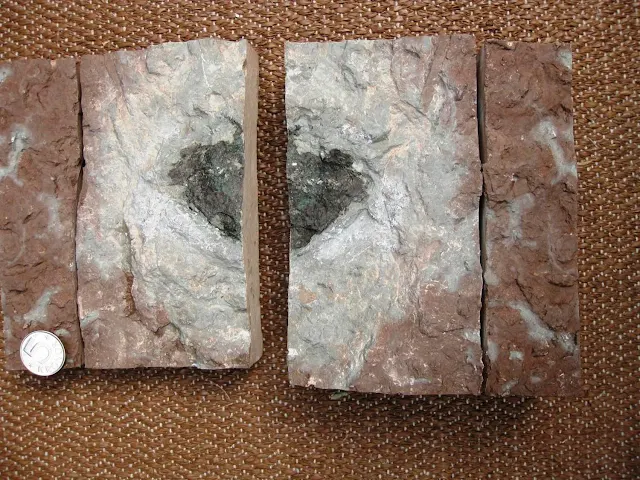Unknown Alien Rock Found in Swedish Quarry
A morsel of never-before-seen alien rock has been dug up in a limestone quarry in Sweden, where it had lain deeply buried for about 470 million years.
An ancient space rock discovered in a Swedish quarry is a type of meteorite never before found on Earth, scientists reported in the journal Nature Communications.
"In our entire civilization, we have collected over 50,000 meteorites, and no one has seen anything like this one before," said study co-author Qing-zhu Yin, professor of geochemistry and planetary sciences at the University of California, Davis. "Discovering a new type of meteorite is very, very exciting."
Ost 65 was discovered in Sweden's Thorsberg quarry, source of more than 100 fossil meteorites. Measuring just under 4 inches wide, it looks like a gray cow patty plopped into a pristine layer of fossil-rich pink limestone. The Ost 65 rock is called a fossil meteorite because the original rock is almost completely altered except for a few hardy minerals -- spinels and chromite. Analyses of chromium and oxygen isotopes in the surviving minerals allowed the researchers to conclude the Ost 65 meteorite is chemically distinct from all known meteorite types.
By measuring how long Ost 65 was exposed to cosmic rays, the team established that it traveled in space for about a million years before it fell to Earth 470 million years ago. This timeline matches up with L-chondrite meteorites found in the quarry, leading the study authors to suggest the rock is a fragment of the other object from the Ordovician collision. The original object may have been destroyed during the collision, but it's also possible that the remains are still out in space.
Meteorites may have influenced evolution
Researchers think that about 100 times as many meteorites slammed into Earth during the Ordovician compared with today, thanks to the massive collision in the asteroid belt. This rain of meteorites may have opened new environmental niches for organisms, thus boosting both the diversity and complexity of life on Earth.The study was led by Birger Schmitz, of Lund University in Sweden. Yin, of UC Davis, together with his postdoctoral fellow Matthew Sanborn, made the very precise measurement of chromium in tiny mineral grains within the meteorite. Researchers from the University of Hawaii at Manoa analyzed its oxygen isotopes.
The new findings strengthen suspicions that more recent meteorite falls on Earth do not represent the full range of rocks drifting through the solar system. Yin said there is potential to better understand the history of our solar system by collecting meteorite fragments preserved in Earth's ancient rocks. "If we can go back even further in time, we may eventually be able to find some of the true building blocks of Earth," Yin said.
The research was funded by NASA, the UC Office of the President and a European Research Council Advanced Grant.
The above post is reprinted from materials provided by University of California - Davis.




%20(1).webp)





